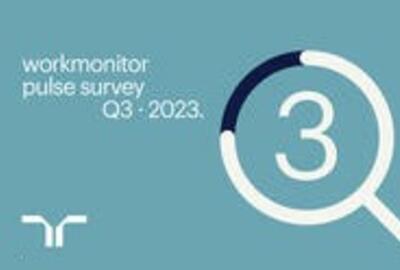Flexibility and stability might sound like opposing forces, but in today’s workplace, both are increasingly needed to help employees thrive, and for companies to retain and attract new talent.
Nearly all employees surveyed in Randstad’s global Workmonitor 2023 report said job security was important, while 83% said flexibility was highly valued.
Workforce expectations are changing. So what do employees really mean when they say they value flexibility and stability, and how can businesses seek to understand and respond to these increasingly important needs?
flexibility has not increased evenly
The data is clear — workers want flexibility. But Randstad’s latest Pulse report findings show that experiences differ widely — just over half of white-collar workers have seen increased flexibility since the pandemic, compared with just 20% of blue-collar and 26% of gray-collar professionals.
And more than half of office-based staff said they are more likely to value flexibility in terms of working from home, while the top flexible working arrangements for non-office-based roles are the working schedule, followed by the number of hours worked.
“Everyone is different,” says Tania de Decker, chief customer officer at Randstad Enterprise. “But the key to success is finding out what ‘flexibility’ and ‘stability’ actually mean to our employees and potential employees, so we can understand each other’s needs better.”
Flexibility, for example, might mean a business opening up the traditional 9-5 working schedule in order to find skilled labor unable to commit to “normal” working hours. Letting someone work 8-4 on a Wednesday because they have to pick up their children from school could mean the difference between having a skilled worker or not, explains de Decker.
growing need for stability
The high cost of living, economic uncertainty and geopolitical instability are a shared experience for many workers. Making the workplace a refuge from external worries should be a priority for businesses looking to attract and retain talent.
Over 90% of workers value job security, and over half are worried about the impact of economic uncertainty and want a pay rise outside of annual reviews.
But companies can only do so much — solutions should balance a business’ need to help improve job stability with its profitability, and companies could even risk job security by overextending on long-term financial commitments.
practical next steps for businesses
A company looking to attract and retain talent will do so by cultivating a pleasant working environment for all, but will have to ditch the cookie-cutter approach of rolling out the same benefits to everyone. Instead, target what is most important to the individual, de Decker says.
“If we don’t know what our employee or potential employee means when they talk about flexibility or stability — in real terms — we could be missing out on huge talent pools for no good reason.”
For companies looking to improve employees’ sense of stability, previous initiatives have included permanent financial incentives like pay raises or stock options. But there are also lower-cost initiatives more geared towards saving staff money — such as car-pooling, subsidized commuting costs, or free tax advice — as well as one-off salary bonuses outside of annual pay reviews and monthly pay boosts during financially turbulent times.

Everyone is different. But the key to success is finding out what ‘flexibility’ and ‘stability’ actually mean to our employees and potential employees, so we can understand each other’s needs better.
Companies reacting to the need for more job flexibility are increasingly offering up a menu of job package options for their staff, and treating them more like customers, says de Decker.
“Where and when do you want to work, ideally? What percentage of your salary would you like to take as stock? Do you need a longer lunch because you’re training for a marathon? Get to know your employee and find the opportunities.”
By listening to staff and their changing needs, and using those conversations to adopt mutually beneficial initiatives, de Decker concludes, organizations can build a balanced offer that will allow them to continue growing a diverse, inclusive workforce ready for the future.




